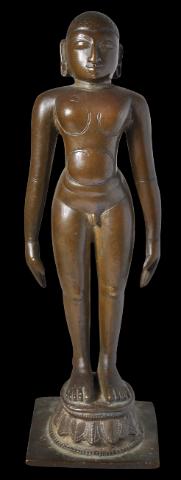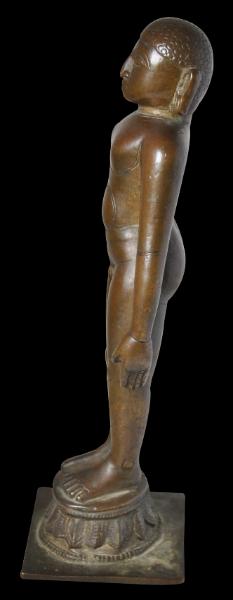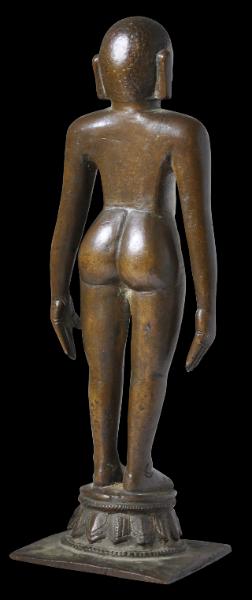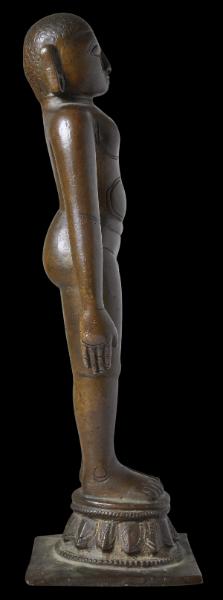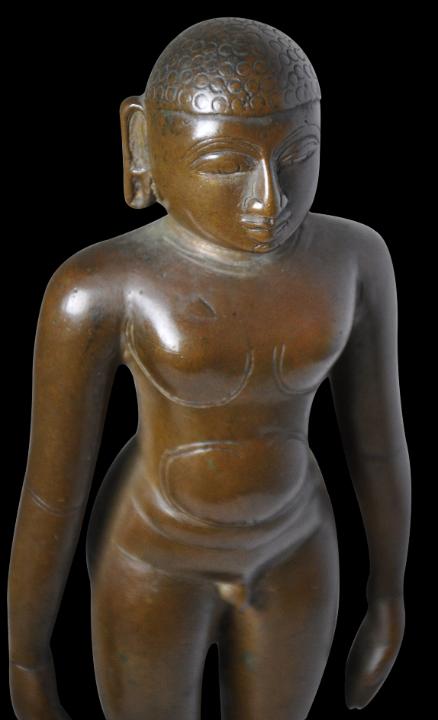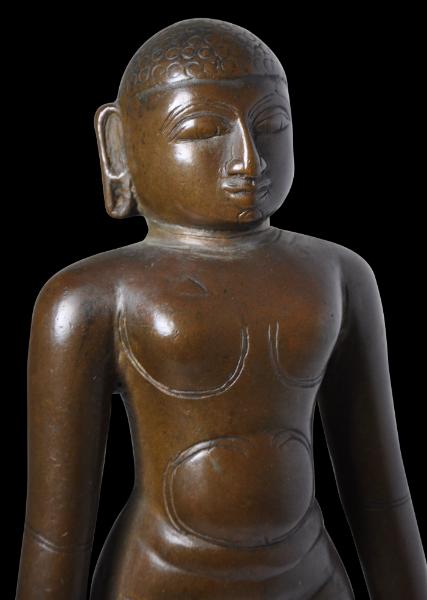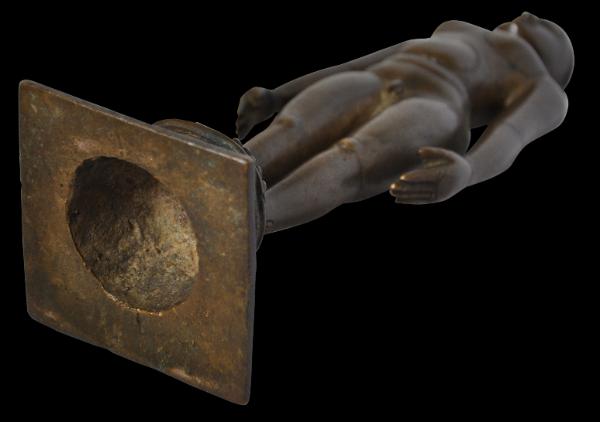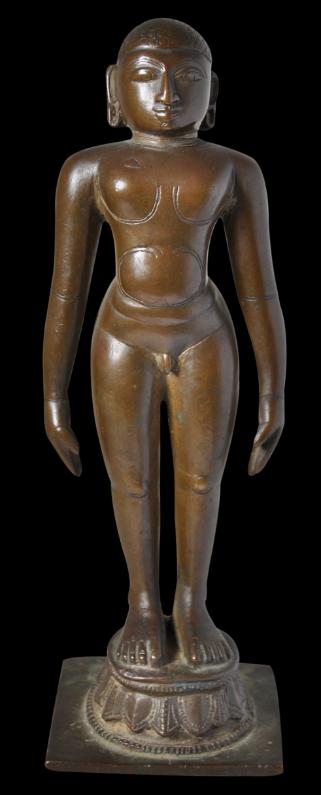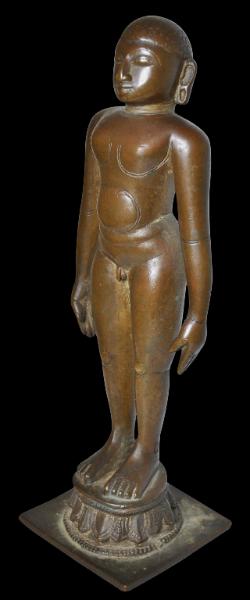
Jain Tirthankara Bronze
Bronze Jain Digambara Tirthankara, probably the Jina Parsvanatha
Karnataka, South India
17th-18th century
height: 24.5cm, weight: 2,084g
This image of a Jina standing in the classic kayotsarga meditative posture is probably of the Jina Parsvanatha. The figure has fleshy contours, broad shoulders, wide hips, elongated arms and elongated ear lobes, closely cropped hair, and an auspicious triangular srivatsa symbol to suggest divinity not in the middle of the upper chest as is conventional but over the image’s right breast.
Triple folds can be seen on the neck (
trivali). Other skins folds can be seen to denote the knees, the elbows, the groin, the stomach and the pectoral region.
The face is finely rendered with triple lines over the eyes to denote lids and eyebrows. The chin is marked with a double circle. The nose is pointed and prominent and the lips are full and slightly pursed.
The image stands on a rounded, lotus pedestal.
The nakedness of the figure suggests that the image was made for a devotee of the Digambara sect, a Jain sect that was most widely followed among the Jains of the Deccan plateau and the very south of India. ‘Digambara’ referred to those who were ‘sky clad’ in that they went naked. Jainism prospered in the south, and was protected by powerful local rulers. Most Jain images from the south show the jinas as unencumbered by personal possessions including clothing.
The
kayotsarga position as shown with the image here is the austerity meditation or ‘body-abandonment’ posture. Its simplicity saw the production of some particularly beautiful images that embody the essence of the rejection of the material world.
The image here is in excellent condition. There are no cracks, chips or repairs. The image has a superb chocolate patina.
References
van Alphen, J., Steps to Liberation: 2,500 Years of Jain Art and Religion, Ethnographic Museum Antwerp, 2000.
Pal, P.,
The Peaceful Liberators: Jain Art from India, Thames & Hudson/Los Angeles County Museum of Art, 1995.
Provenance
UK art market; probably has been in the UK since the colonial era.
Inventory no.: 2336
SOLD

